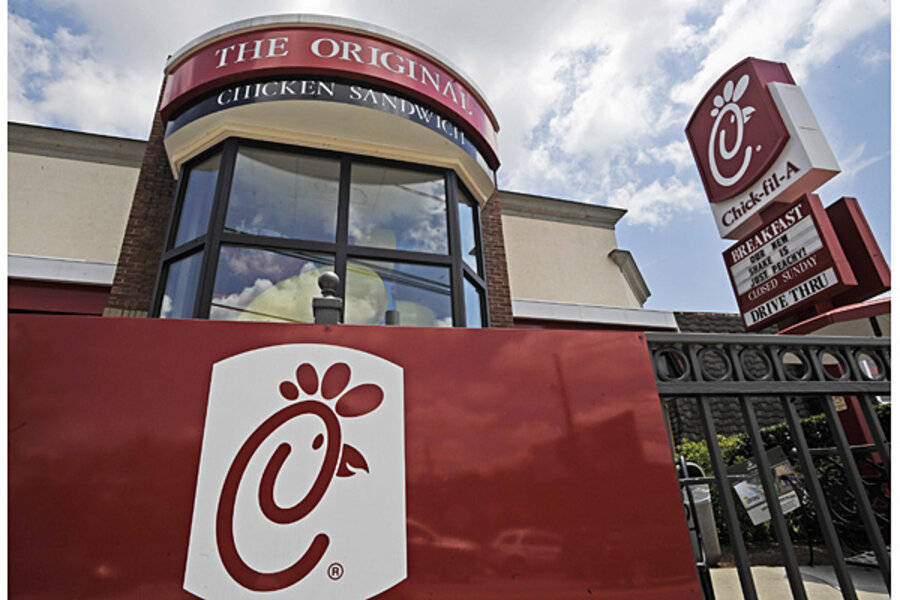Chick-fil-A sales trounce KFC, with half the locations
Loading...
KFC has ruled atop the fast food chicken market in the US for years. In 2004, the fast food chain had 5,500 locations, and its sales made up nearly half of the quick service fried chicken market.
A decade later, the Colonel’s restaurant has been bested by a competitor less than half its size. Chick-fil-A, the Atlanta-based chain known for its chicken sandwiches and the outspoken religious beliefs of its ownership, made $5 billion in sales last year, topping KFC’s $4.2 billion, according to a report from Bloomberg Businessweek. That’s impressive for a few reasons: Chick-fil-A, which is heavily concentrated in the South, has 1,775 locations; KFC has about two and half times that, at 4,491 restaurants. But Chick-fil-A made up for its small footprint in terms of restaurant traffic, with the average store making $3.2 million, more than triple the $938,000 for the average KFC location. To boot, Chick-fil-A is closed on Sundays, so the chain only has money coming in six days a week.
During its 2004 peak, KFC had about four times the locations as Chick-fil-A. Both the latter’s number of locations and sales figures have increased in that time, while KFC has closed about a thousand restaurants since its peak and focused most of its expansion efforts in Asia. Chick-fil-A has been more successful than its competitors in the breakfast market, and customers tend to spend more per check than they do at other chains, said Darren Tristano, an executive vice president at restaurant consultancy Technomic, in an interview with Bloombeg.
Chick-fil-A has an enthusiastic following, particularly in the South, and it’s been savvy in anticipating and meeting customer demands for healthier options within the changing fast food landscape. In February, the chain announced plans to convert to antibiotic-free chicken within the next five years. Last year, it removed artificial yellow dye from its chicken soup and began testing the removal of other ingredients, like high fructose corn syrup, from its food after Vani Hari, an influential food blogger, wrote a post outlining the ingredients in Chick-fil-A foods titled “Chick-fil-A or Chemical-fil-A?”
Perhaps because of these responses, consumers gave the chain high marks in “Social responsibility,” in a recent Technomic survey.
Of course, that doesn’t mean that Chick-fil-A is free from controversy. In 2012, the chain was a part of dueling demonstrations after CEO Dan Cathy made public comments condemning gay marriage. Religious leaders and those who felt Chick-fil-A had a right to do business regardless of its CEO’s views mobilized in support during “Chick-fil-A appreciation Day,” others, including former Boston Mayor Tom Menino and LGBT activists, encouraged a boycott, launched a counter protest called “Kiss Mor Chiks,” encouraging same sex-couples to go to the chain’s restaurants and kiss each other.
The newest chicken king has thrived nonetheless, and its future plans involve expansion of its US footprint beyond its southern stronghold into the Midwest, Northeast, and West. That wouldn’t take much: there are only two Chick-fil-A locations in Massachusetts, for instance, compared to 200 in Georgia and 161 in Florida.








